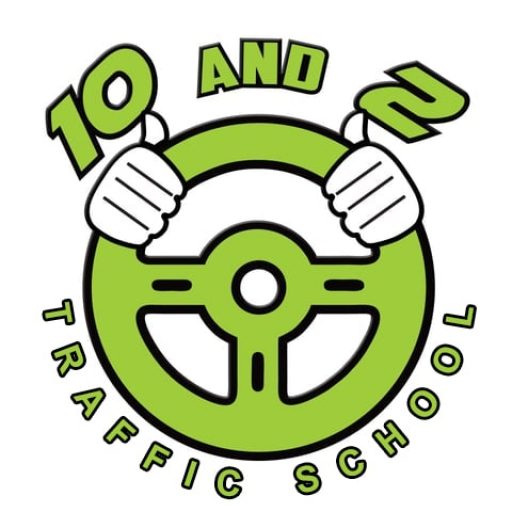Driving is an everyday activity for most of us. It’s easy to forget how important it is to stay safe on the road, especially when we’re in a hurry or feeling frustrated. That’s why it’s crucial to understand the differences between defensive and aggressive driving. Defensive driving is a set of skills that can help you avoid accidents and stay safe on the road. In this blog, we will explore the key principles of defensive driving, how it differs from aggressive driving, and its role in promoting road safety. We will also discuss the common traits of aggressive drivers, their consequences, and why defensive driving should be the preferred option. Lastly, we will delve into the importance of traffic schools in promoting defensive driving and how you can enroll in one in Orange Park.
Understanding Defensive Driving
Defensive driving promotes safe driving habits and reduces traffic violations. It focuses on anticipating and avoiding potential hazards on the road. Taking a defensive driving course can improve driving skills and reduce insurance premiums. Following traffic laws and speed limits is emphasized in defensive driving. Implementing defensive driving techniques can help prevent accidents and save lives.
Key Principles of Defensive Driving
Maintaining a safe speed and keeping a safe distance from other vehicles are essential principles of defensive driving. Staying alert, being aware of your surroundings, and actively scanning the road for potential dangers are key practices. Adhering to these principles helps prevent aggressive driving behaviors and promotes courteous driving. Defensive driving also involves anticipating the actions of other drivers and responding appropriately. By following these principles, drivers can enhance road safety and reduce the risk of accidents.
Exploring Aggressive Driving and its Consequences
Aggressive driving poses serious risks to others on the road, often leading to accidents, injuries, and even fatalities. These dangerous behaviors, including speeding and tailgating, are not only illegal but can also result in traffic violations and fines. Aggressive drivers tend to disregard traffic laws and engage in reckless habits, contributing to traffic congestion and road rage incidents. Understanding the severe consequences of aggressive driving is crucial for promoting safer driving habits and ensuring the well-being of all motorists.
Common Traits of Aggressive Drivers
Aggressive drivers often exhibit impatience, hostility, and a disregard for the safety of others on the road. They frequently engage in tailgating, excessive speeding, and frequent lane changes. Additionally, aggressive drivers may resort to aggressive gestures, honking, or flashing lights at other drivers. They tend to ignore traffic signals, cut off other drivers, and make aggressive passing maneuvers. Recognizing these aggressive driving behaviors is crucial for avoiding dangerous situations and reporting them to law enforcement.
 Comparing Defensive Driving and Aggressive Driving
Comparing Defensive Driving and Aggressive Driving
Defensive driving prioritizes safety, cooperation, and following traffic laws, reducing the risk of accidents and promoting road safety. In contrast, aggressive driving is characterized by hostility, impatience, and a disregard for traffic rules, increasing the likelihood of collisions and endangering drivers, passengers, and pedestrians. By adopting defensive driving habits, drivers can avoid aggressive behaviors and contribute to a safer driving environment. It’s important to understand the differences between defensive driving and aggressive driving to make informed choices on the road.
How do Defensive and Aggressive Driving Affect Road Safety?
Defensive driving plays a crucial role in improving road safety. It reduces accidents, injuries, and property damage. On the other hand, aggressive driving undermines road safety by increasing the risk of accidents and aggressive interactions between drivers. Emphasizing defensive driving can create a safer road environment for everyone.
The Role of Traffic Schools in Promoting Defensive Driving
Traffic schools play a vital role in promoting defensive driving habits and reducing traffic violations. They offer defensive driving courses that educate drivers on safe driving practices and traffic laws. These courses can help drivers improve their skills, knowledge, and awareness, contributing to the overall safety of the community. Moreover, traffic school enrollment can lead to insurance discounts for those who complete defensive driving courses. By offering programs that focus on defensive driving, traffic schools actively contribute to creating a safer road environment.
Enrolling in a Defensive Driving Course in Orange Park
Enhancing driving skills and knowledge is possible through enrolling in a defensive driving course in Orange Park. These courses provide valuable information on traffic laws, safe driving habits, and defensive driving techniques. By completing such a course, drivers may be eligible for insurance premium reductions or point reduction on their driving records. Whether in-person or online, Orange Park offers accessible defensive driving courses that provide flexibility for drivers. Contributing to safer roads and reducing traffic incidents are some of the benefits of enrolling in a defensive driving course in Orange Park.
Conclusion
Defensive driving promotes safety and responsible behavior on the road. It involves following key principles such as maintaining a safe distance, being aware of your surroundings, and anticipating potential hazards. Aggressive driving, on the other hand, poses risks to both the aggressive driver and other road users. It is characterized by traits such as excessive speeding, tailgating, and frequent lane changes. When comparing defensive driving and aggressive driving, it is clear that defensive driving helps prevent accidents and promotes a positive driving culture. To enhance your defensive driving skills and ensure your safety on the road, consider enrolling in a defensive driving course in Orange Park.


